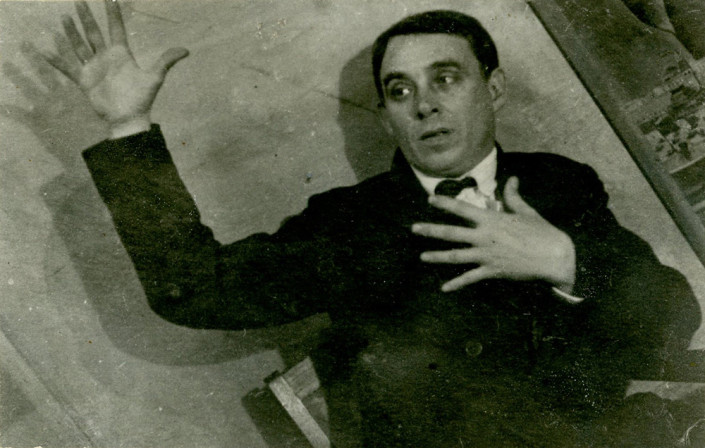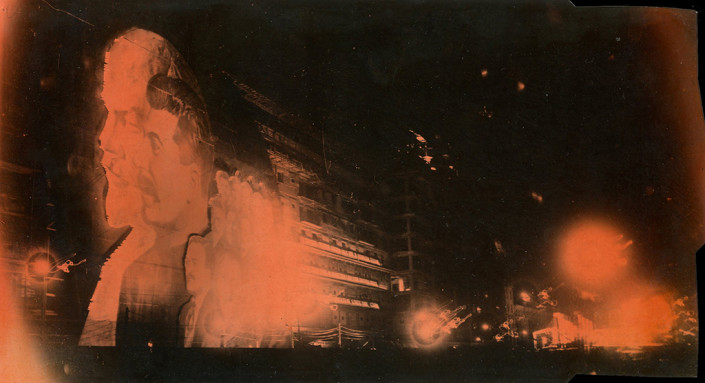A central figure of Constructivism and pioneer of photomontage, Gustav Klutsis participated in the political and intellectual ferment of the early Soviet Union as a photographer, painter, sculptor, graphic artist, designer, and teacher. After a period studying under Kasimir Malevich, Klutsis translated Suprematism’s fascination with pure geometry into more architectural constructions of wood and paper. In the 1920s he started using combinations of photographs taken from everyday life, self-portraits, drawings, and cut-outs from publications to create an early form of photomontage. Klutsis also created utilitarian objects through an ingenious combination of industrial design and assemblage, as in his agitprop stands made from fragments of loudspeakers, platforms, film projectors, and screens. Late in his career he was a key member of the avant-garde collective October alongside El Lissitzky, Alexander Rodchenko, and wife Valentina Kulagina.
Studium
1913 started studies in the Riga City Art School
1919 studies in Moscow in the studio of Kazimir Malevich.
1924 became a professor of color theory at the Constructivist school VKhUTEMAS (Higher State Artistic and Technical Institute)
Ausstellungen
1922 First Russian Art Exhibition, Berlin
1928 Soviet Pavilion of the Pressa Exhibition, Cologne
Press DE
A central figure of Constructivism and pioneer of photomontage, Gustav Klutsis participated in the political and intellectual ferment of the early Soviet Union as a photographer, painter, sculptor, graphic artist, designer, and teacher. After a period studying under Kasimir Malevich, Klutsis translated Suprematism’s fascination with pure geometry into more architectural constructions of wood and paper. In the 1920s he started using combinations of photographs taken from everyday life, self-portraits, drawings, and cut-outs from publications to create an early form of photomontage. Klutsis also created utilitarian objects through an ingenious combination of industrial design and assemblage, as in his agitprop stands made from fragments of loudspeakers, platforms, film projectors, and screens. Late in his career he was a key member of the avant-garde collective October alongside El Lissitzky, Alexander Rodchenko, and wife Valentina Kulagina.
Education
1913 started studies in the Riga City Art School
1919 studies in Moscow in the studio of Kazimir Malevich.
1924 became a professor of color theory at the Constructivist school VKhUTEMAS (Higher State Artistic and Technical Institute)
Exhibitions
1922 First Russian Art Exhibition, Berlin
1928 Soviet Pavilion of the Pressa Exhibition, Cologne
Press EN



